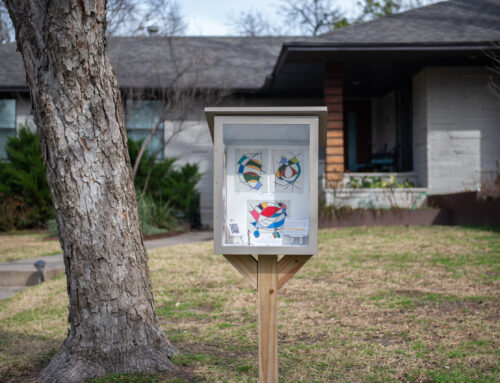A subject of increasing interest is the progress of a citizen task force attempting to devise guidelines that will encourage preservation of existing trees, as well as the planting of new trees.
The task force has made considerable progress and should have recommendations for the Zoning Ordinance Advisory Committee (ZOAC) and the Plan Commission later this month.
City staff and task force members have proposed specific ideas that appear worthy of consideration, including a detailed “anti-clear cutting” provision that would prohibit removal of trees greater than three inches in caliper from any parcel of land exceeding two acres in size, or not containing a single-family or duplex use, until a building permit (or other applicable permit) has been obtained.
Such an ordinance would allow City staff to monitor trees, especially on larger tracts, prior to their removal.
Other items being considered are setback and parking exceptions to encourage tree preservation, establishment of a tree or a conservation easement for subdivisions, a two-tree requirement for new single-family and duplex lots, and retention standards for existing trees based on a point system under the landscape ordinance.
East Dallas resident, ZOAC member and former Plan Commissioner Michael Jung also has proposed an outline of a possible compromise tree ordinance that served as the basis for a fruitful discussion at the last task force meeting.
The dynamics of this group have been interesting, with environmental and neighborhood groups on one side of issues and development, construction and property owner groups on the other side – with both sides initially suspicious of the other.
However, as the group continued its work, participants have found a surprising amount of common ground and have learned that ultimately, each group has many similar objectives.
Signs of the Times
The Plan Commission has considered, and sent on to the City Council, amendments to the Dallas Development Code relating to “special purpose” signs – that is, portable signs and banners.
The Zoning Ordinance Advisory Committee (ZOAC), after much public testimony, study and discussion, had recommended that “special purpose detached signs”, or what we think of as portable signs, be completely outlawed, while signs located inside the windows, as well as banner signs (within certain guidelines), would be more liberally permitted than they are now.
Staff recommended somewhat more restrictive requirements for banner signs, while proposing that portable signs be permitted no more than three times each calendar year for a maximum of 45 consecutive days each time.
The Plan Commission adopted the staff’s recommendation – the less restrictive rule on portable signs and the more restrictive rule concerning banner signs – over the ZOAC recommendation.
The issue now goes before the Council, where it is anticipated that much additional discussion will take place.
Playground Compromise
The art of compromise apparently is not dead, at least according to the Lakewood Heights neighborhood association, the Lakewood Assembly of God Church and the City.
After several month of discussions, the group recently settled on a mutually agreeable Specific Use Permit period for a children’s playground the church intends to build on its property at Abrams and Vickery.
The church originally requested a five-year SUP with a five-year renewal period, while the neighborhood asked for a two-year initial SUP period with five-year renewable period thereafter. Apparently, past communication problems between the church and association resulted in a bit of mistrust between the groups.
Last month, the Plan Commission ratified the neighborhood’s SUP plan, and the neighborhood scored a coup when Councilman Craig McDaniel asked for a study of the area for a potential Planned Development District.
Junius Heights Study Sought
The Plan Commission has been considering whether to authorize City planning staff to proceed with a Planned Development District study for the Junius Heights area, which is roughly bounded by Paulus and Abrams on the east, Columbia and Reiger on the south, Henderson on the west, and Gaston Avenue on the north.
The issue arose because a survey of the neighborhood revealed that about 25 percent of neighborhood land is occupied by non-conforming multifamily and duplex properties, with the Junius Heights neighborhood zoned R-7.5 (that is, single-family homes on 7,500-square-foot lots).
Many of the multifamily and duplex uses were constructed when the neighborhood was developed during the early 1900s.
Controversy developed among area residents, with some wanting to adhere strictly to existing zoning and other believing a Planned Development District can do positive things for the neighborhood and improve area properties.
The Plan Commission was scheduled to consider the issue late last month, and it is anticipated that the case will be taken under advisement for a period from two to 12 months to allow neighborhood residents to develop a solution.
We’ll keep you informed as the case proceeds.





